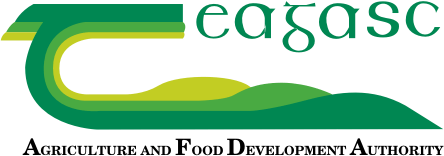13 October 2023
Pick your paddocks now for next spring’s grazing

All farms should have started closing paddocks, the Teagasc Grass10 team has reminded farmers in its most recent weekly newsletter. Remember, every week delay in closing reduces spring grass supply by 100kg DM/ha.
To get good clean outs on paddocks, farmers are encouraged to continue to strip graze, use a back fence and multiple access points to reduce damage. It is important with the current cost of production challenge to maximise milk and meat production for grass.
In terms of closing targets, the aim on dry farms is to have 60-70% of the farm closed by November 1st. Heavy farms should be achieving 80% closed by this date. For a 30ha farm, this means grazing 20ha (66%) in 25 days, i.e. 0.80ha/day or 5.5ha/week.
Paddock choice during closing is critical
While closing is influenced by ground conditions, paddock choice during closing is critical. To start grazing next spring, some of the drier paddocks that have good grazing infrastructure with roadways and plenty of access/exit points will need to be targeted.
These paddocks will need to be closed in mid-October to ensure a good supply of grass is available to start grazing next spring. When weather conditions recover this week, try and graze off some of the more difficult, heavier soil type paddocks on your farm. The infographic below (figure 1) offers advice on picking paddocks to graze first next spring.
Figure 1: Picking paddocks to graze first next spring

Tactically using dairy washings and light slurry
The deadline for slurry application has been extended to this Saturday, October 14th. The Grass10 team has advised farmers to use dairy washings / light slurry on clover paddocks and paddocks grazed at a rate of 1500 gallons/ac. Keep an eye on the weather forecasts and do not apply slurry or dairy washings when heavy rainfall is expected. Apply to the right paddocks that will give the best response, such as recently reseeded paddock, dry paddocks and paddocks with excellent soil fertility.
Addressing the declining AFC and completing an autumn grass budget
The objective of autumn grazing management is to keep grass in the diet of the grazing animal, while at the same time closing up the farm properly to provide grass in spring. The average farm cover (AFC) is declining faster than normal on all PastureBase Ireland farms.
Herds with high demand have introduced silage into the diet. Managing the quantity of silage fed is important to avoid the risk of under grazing during closing. Over feeding of silage will diminish appetite of the grazing animal and compromise the graze out of the sward – especially at high covers (>2000 kg DM/ha).
Where silage is being fed at night, it is important that animals returning to the grazing sward the next day do not have silage in front of them before turnout to grass. This will improve their appetite for grazing and help achieve the correct residual.
Grass growth will now in most cases will be lower than herd demand, therefore the management of AFC becomes more critical. Why do we plan grass allocations into the autumn? Because it will help stretch grass for longer in the diet. Stretching out grass will increase the amount grown and every day at grass increases profitability of your farm. The PBI budget will indicate how much silage will need to be fed during closing.
More information on grass budgets and rotation planners is available here. For more information on the Grass10 Campaign and to sign up to its weekly newsletter, click here.
